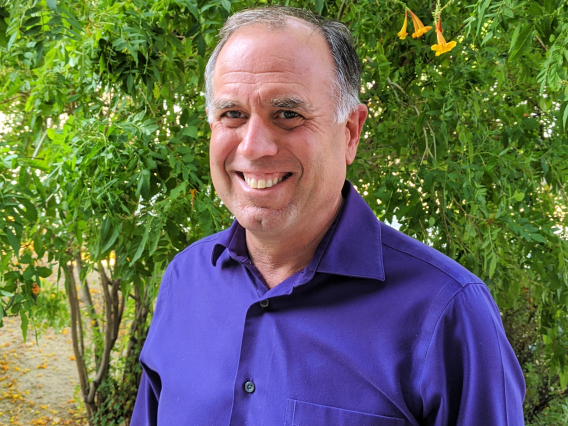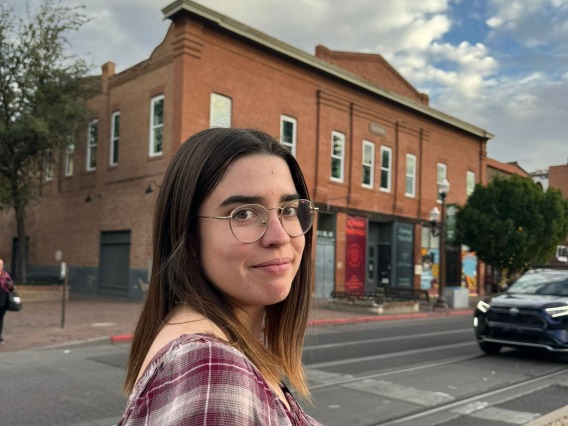Imagination is the Most Powerful Tool: Kevin Kudo-King '95 B.Arch
Kevin Kudo-King, Principal/Owner, Olson Kundig
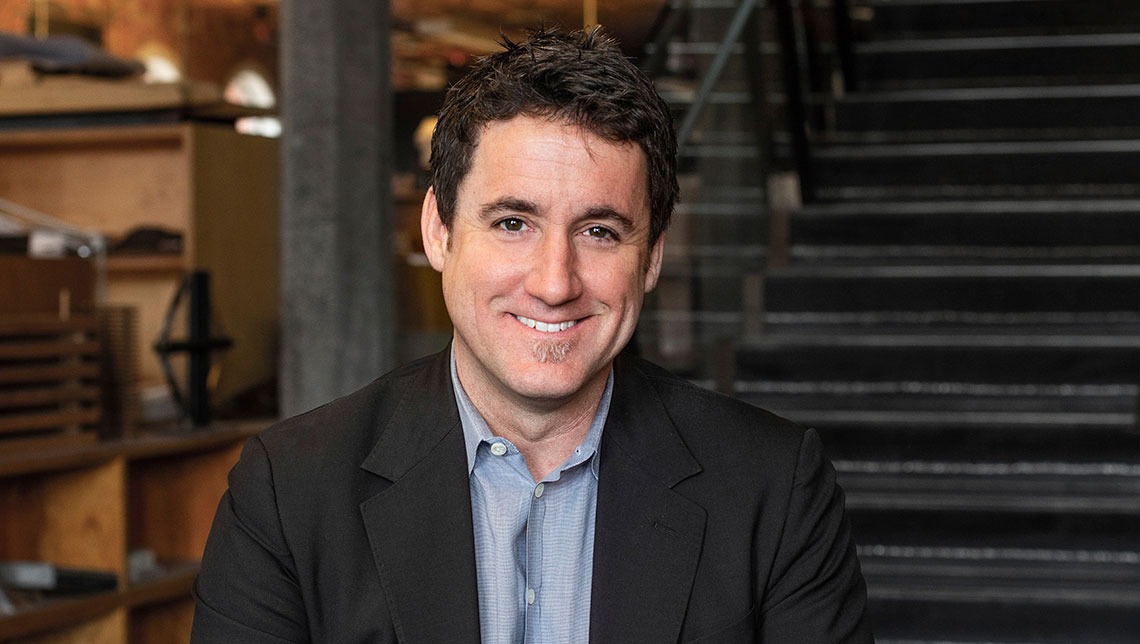
Kevin Kudo-King '95 B Arch. Photo by Rafael Soldi.
"The most powerful tool an architect has is their imagination—don’t get infatuated with the 'how' and lose sight of the 'why' and the 'what.'"
Kevin Kudo-King, a 1995 graduate of the University of Arizona Bachelor of Architecture program originally from Hawaii and the central coast of California, is the principal/owner of internationally renowned design firm Olson Kundig in Seattle, Washington. In this profile, he discusses his path through and beyond architecture school, offers insight for current design students, shares the collaborative process used by his design firm as well as a recent favorite project and shares how his inspirations and passions shape his design outlook.
Why did you decide to pursue your architecture degree at the University of Arizona?
I was drawn to the school based on its reputation and my desire to attend a five-year program. Arizona’s Sonoran Desert was very different from Hawaii and the California central coast where I grew up. I can still remember driving into Tucson from the north, discovering the historic intact barrio next to new architecture and a city cradled by mountains on all sides. I was immediately inspired by my surroundings and knew I’d made the right decision!
What did you find most rewarding about the architecture program at CAPLA?
CAPLA introduced me to contextualism and regionalism, and the importance of architecture that responds to site and place. It was incredibly powerful to effectively have the desert as a teacher! It also helped me realize that responding to place was not just about the physical but also non-physical context, such as the cultural landscape. In addition, the program encouraged us to think beyond design to how a building is constructed and its materiality. Eventually this emphasis on designing for place, introduction to craft and focus on materiality led me to Olson Kundig. These are the central tenets that inform all of the work we do.
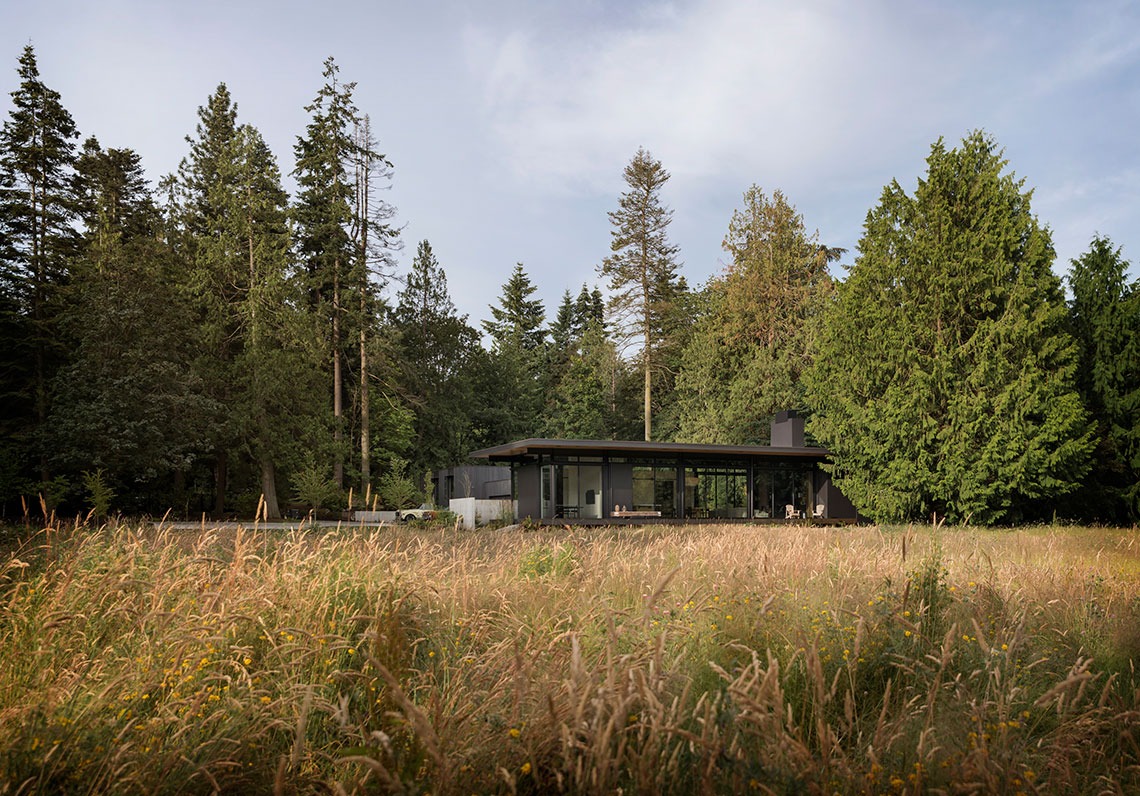
The Woodway Residence, by Olson Kundig. Photo by Aaron Leitz.
What was your biggest challenge while in school, and how did you overcome that challenge?
I had a lot to learn! CAPLA taught me how to think about design like an architect, as a non-linear and linear process that needs to balance the poetic and the rational. It also provided a foundational awareness of the professional and technical aspects of building. As an architect, you have to wear many different hats throughout the lifecycle of a project—which is a lot to absorb, even in five years. Classes provided a concrete foundation of knowledge, but ultimately understanding what I was learning came from unstructured time in studio or in dialogue with professors and classmates. I found that the time I spent out of classroom, in the studio or in the desert was key to successfully navigating architecture school.
Tell us about your final capstone project.
My capstone project was a museum set in the airplane graveyard in Tucson. I was fascinated by that place—the scale of the planes and the cadence of how they were laid out, as well as the way they created a strong axial gesture to the horizon. They existed there in a state of decay, like ruins. My project was to create a museum set within these ruins. Later I learned that embracing this state of decay could be understood through the Japanese philosophy of wabi-sabi, which accepts imperfection and impermanence.
Tell us about your work with Olson Kundig, and your vision for the firm.
For every project and client, my goal is to create spaces where people can be fully mentally and emotionally present. The most meaningful experiences occur when people are able to connect to the special qualities—both physical and metaphysical—of the places they inhabit. My work seeks to illuminate and respond to those qualities, introducing transformative and inspiring moments.
Olson Kundig is highly collaborative practice, with bi-coastal offices and projects around the world. We believe strongly in designing buildings that are high-performing and sustainable in their response to environment and context, while satisfying the human needs of their inhabitants. We’re always working to nurture the scrappy dynamic we had as a small office and to continue to bring that energy to our work.
We’re not a firm that seeks revolution in every project, we’re much more about evolving the work. Part of that evolution for me is continuing to combine factors like place, client and craft with an ongoing celebration of metaphysical aspects—light, wind, sound, a journey. I push my teams to think about the ethereal and abstract experiences of architecture, inspired by our collaborations with artists like James Turrell.
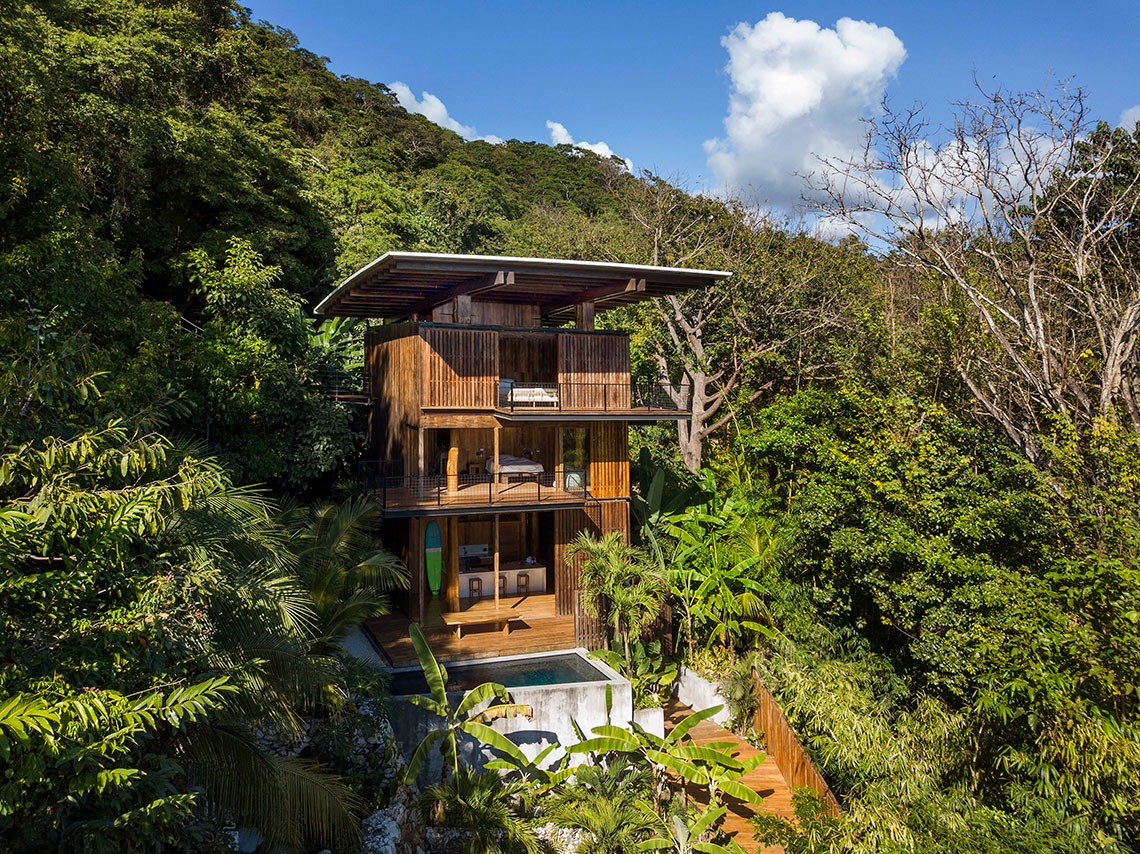
Costa Rica Treehouse, by Olson Kundig. Photo by Nic Lehoux.
Tell us about a project at Olson Kundig that particularly stands out.
I’ve been fortunate to work on a wide variety of really interesting projects, alongside visionary clients and collaborative colleagues. One of my favorites is the Costa Rica Treehouse, where we effectively stripped architecture down to a minimum. This project really asks you to live a certain way, to be open to a different kind of lifestyle. It’s a jungle house that’s passively cooled, utilizing materials that come from nearby. We ran calculations and were excited to learn that the timber used actually sequestered more CO2 than is emitted by the other materials, making it a net positive embodied carbon home.
How did your experience at CAPLA prepare you for your career path as an architect and, ultimately, to be a principal and owner at a leading design firm?
CAPLA’s emphasis on contextually responsive architecture helped me solidify my own point of view as a designer. The ability to visit active job sites as well as access to the Metal Lab has turned out to be incredibly valuable to my practice. I think it was vital to be able to balance digital technologies and computer-driven skills with those hands-on, craft-focused experiences. Likewise, the holistic introduction to architecture as a profession, both the design side and the business side, helped me to anticipate wearing many different hats.
What inspires your creativity?
Traveling to other places and experiencing other cultures is a major source of inspiration for me—being in a new environment asks you to pay complete attention and study every detail, without making assumptions. My wife, Motomi, is from Japan and her parents are chefs and restaurant owners there, which means I have been exposed to incredible food and experiences whenever we visit.
Travel is a way to access other designers’ ideas, as well. I can clearly remember all the times I have experienced a moment in a building that was transcendent: Corbusier’s Ronchamp chapel, Casa Luis Barragán, Kahn’s Salk Institute, to name a few. In a world of distraction and multitasking, I love that our profession can create moments that are able to fully grab hold of someone and invoke a transformational experience they won’t forget.
In the same vein: being able to visit fabrication shops and construction sites. I’m always looking to learn and grow as a designer, and these visits help inform future work by sparking new ideas.
Olson Kundig’s tradition of crit and internal culture of constructive critique is another big source of creative inspiration. I love the opportunity to sit down with a team—or with people in the office I don’t know as well—to talk about design and work through problems together. In a way, it’s the studio culture of architecture school reflected in our daily practice.
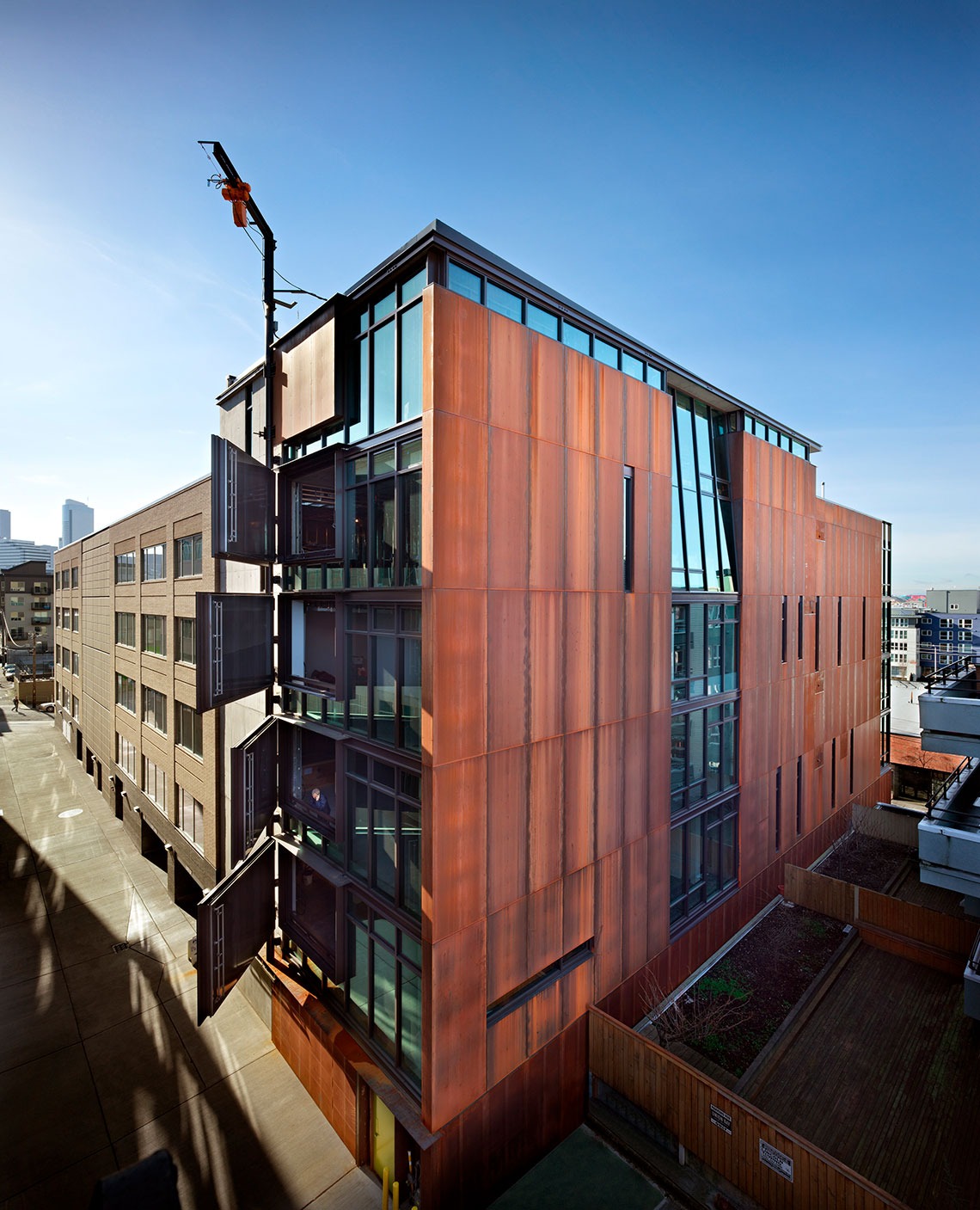
Art Stable, by Olson Kundig. Photo by Benjaim Benschneider.
Beyond your professional work, what are your passions?
Exposure to Olson Kundig’s collaboration with artist James Turrell was a huge influence on me, and as a result I’m passionate about supporting the arts and artists who are moving in bold new directions. I’m active with organizations like Artist Trust and United States Artists that back artists and fund creative pursuits.
I also love to sail. Sailing is a great analogy for my work and the way we approach design at Olson Kundig. When you sail, you can’t solve a problem by overpowering it or exerting your will. To get from A to B, you have to consider external factors—the wind and the currents—and be in tune with your environment, tailoring your actions and responses to what you’re experiencing in nature.
What is the best design advice you’ve received?
Our founding partner Jim Olson told me once that to work effectively with clients, an architect has to be a good listener. You have to develop a rapport with the client. We’re trained as problem solvers—we hear about a challenge and sometimes jump immediately into figuring out a solution. But as soon as we start problem solving, we’ve stopped listening. Patience and openness are key.
What advice do you have for prospective architecture students?
Don’t get tunnel vision or stuck in the weeds—learn from things outside of architecture to broaden your perspective. Keep your head up. Look around. Pay attention to what’s happening around you, and think about why it’s happening—understand it. Being able to understand how things work or why people behave the way they do will ultimately allow you to be a good designer.
Get comfortable with digital tools and non-digital ones. The most powerful tool an architect has is their imagination—don’t get infatuated with the “how” and lose sight of the “why” and the “what.”
And make sure to spend time in studio. You’ll learn a ton from your classmates and from their interactions with professors, as well as your own.
Learn more about the Bachelor of Architecture program, CAPLA alumni programs (including our Alumni Directory) or opportunities to support CAPLA students and faculty.

